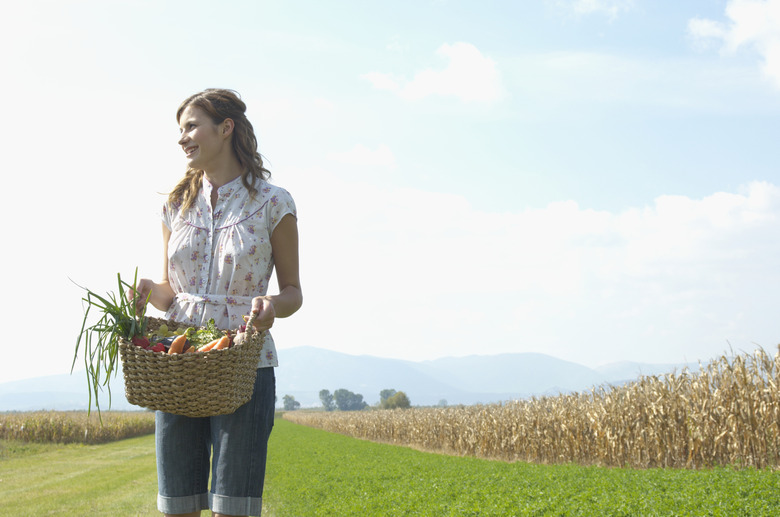How Much Of The Earth's Land Is Farmable?
As the world's population continues to grow, figuring out how much land is available to feed the ever-expanding population may become a vexing problem. Vast quantities of land are already being used for various types of agriculture. Other tracts are available for farming but currently unused. Still other land simply isn't suitable for farming altogether.
Definition Differences
Definition Differences
The definition of what is considered "farmable" varies. Two commonly used descriptors are "arable land" and "agricultural land." Arable land is land temporarily used for crops, meadows, or pastures, which includes land purposefully left temporarily fallow. Land considered arable doesn't include land that is potentially cultivable, however. Agricultural land, or agricultural area, encompasses arable land, as well as land used for permanent, long-term crops that don't need to be replanted yearly, and also permanent meadowland and pastureland. Agricultural land includes fruit and nut trees, but excludes trees grown for timber, since the former is edible while the latter is not.
Modern Usages
Modern Usages
At the time of this writing, the most recently available statistics pertain to 2010, at which point the World Bank reported that about 37.7 percent of the world's total land area was considered agricultural land, while approximately 10.6 percent was considered arable. A significant distinction can be drawn between how much of this land is used for crop production verses livestock production. Satellite images compiled by scientists at the University of Wisconsin-Madison show roughly 17.6 million square kilometers (6.8 million square miles) used to grow crops, with between 32 and 36 million square kilometers (12 and 14 million square miles) used to raise livestock. All told, this equates to a land area about three times the size of the South American continent.
Variability Over Time
Variability Over Time
The amount of land being used for farming varies over time according to the needs of the population. For instance, in 1700, only seven percent of Earth's land was being used for agriculture. As the world's population has risen, the need for farmland has risen accordingly, and will continue to expand proportional to population growth. For instance, scientists estimate that during the 1990s and early 2000s, farmland increased by roughly 50,000 square kilometers (19,000 square miles) per year. Expansion of farmland, however, has a cost, as it encroaches on land formerly used or that could potentially be used for other purposes, such as forestry. Current estimates put the remaining amount of farmable land at about 27 million square kilometers (10.5 million square miles), most of which is concentrated in Africa and Central and South America.
Contributing Factors
Contributing Factors
Certain factors influence the amount of farmable land, many of which are due to natural variation but some of which are attributable to human activity. A vast extent of land isn't farmable due to climate. For example, large swaths of northern Canada, Siberia and the entire continent of Antarctica are covered in ice or permafrost, and much of northern Africa and the Middle East consist of desert; both situations render agriculture impossible. Other natural factors inhibiting agriculture include soil composition, rockiness and altitude. Human activities have also limited the amount of farmable land, among them urban development and sprawl, pollution and landfills, deforestation, soil salinization, and human-influenced climate change, which may in the future lead to events such as desertification and sea level rise.
References
- The World Bank: Agricultural Land (% of Land Area)
- Food and Agricultural Organization of the United Nations: Definitions
- Trading Economics: Arable Land (% of Land Area) in World
- Future Directions International: The Future Prospects for Global Arable Land
- United Nations Statistics Division: Statistics on Land Use, Hubert George
Cite This Article
MLA
Harris, Amy. "How Much Of The Earth's Land Is Farmable?" sciencing.com, https://www.sciencing.com/much-earths-land-farmable-16685/. 24 April 2017.
APA
Harris, Amy. (2017, April 24). How Much Of The Earth's Land Is Farmable?. sciencing.com. Retrieved from https://www.sciencing.com/much-earths-land-farmable-16685/
Chicago
Harris, Amy. How Much Of The Earth's Land Is Farmable? last modified March 24, 2022. https://www.sciencing.com/much-earths-land-farmable-16685/
